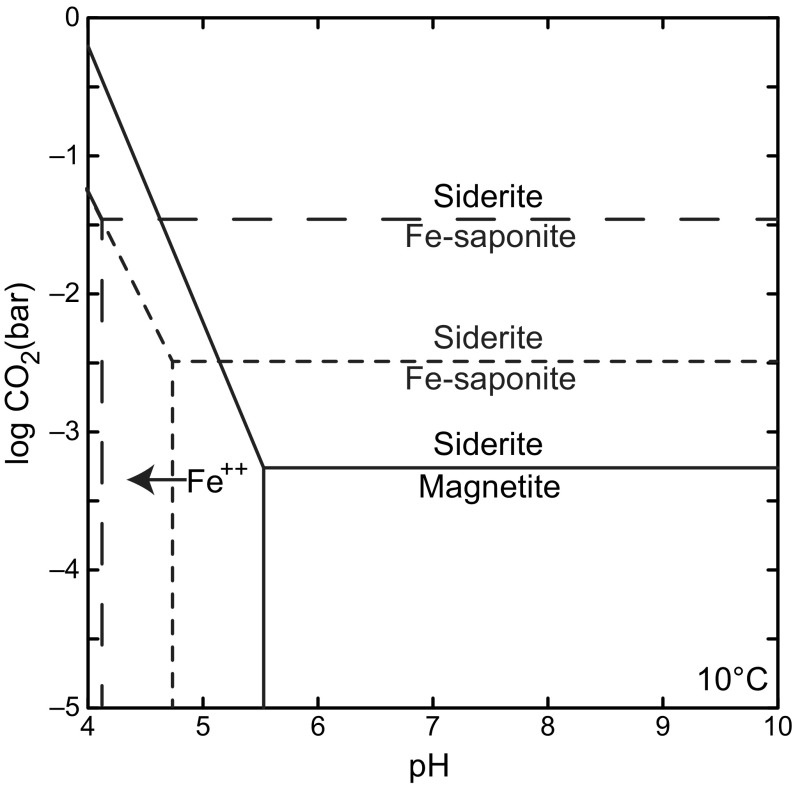Fig. 1.
Thermodynamic stability of secondary minerals (magnetite and Fe saponite) detected in the Sheepbed member, Yellowknife Bay with respect to siderite under varying pH and gaseous CO2 levels. The threshold PCO2 at which siderite is favored over ferrian saponite is dependent on aqueous silica and Al3+ activity. The threshold is higher when SiO2(aq) is saturated with respect to amorphous silica (long dashed line) rather than quartz (short dashed line). In both cases Al3+ is set to saturation with respect to albite—reasonable given that the Sheepbed contains ∼20 wt % plagioclase feldspar (9). In drawing the stability boundaries for magnetite, redox state is set at the magnetite/hematite boundary, as detailed in the main text. All thermodynamic data come from the Lawrence Livermore National Laboratory dataset (15) with the exception of Fe saponite (Na0.35Fe3Al0.35Si3.65O10OH2) determined by Wilson et al. (16). Diagram produced using Geochemist Work Bench 9.

